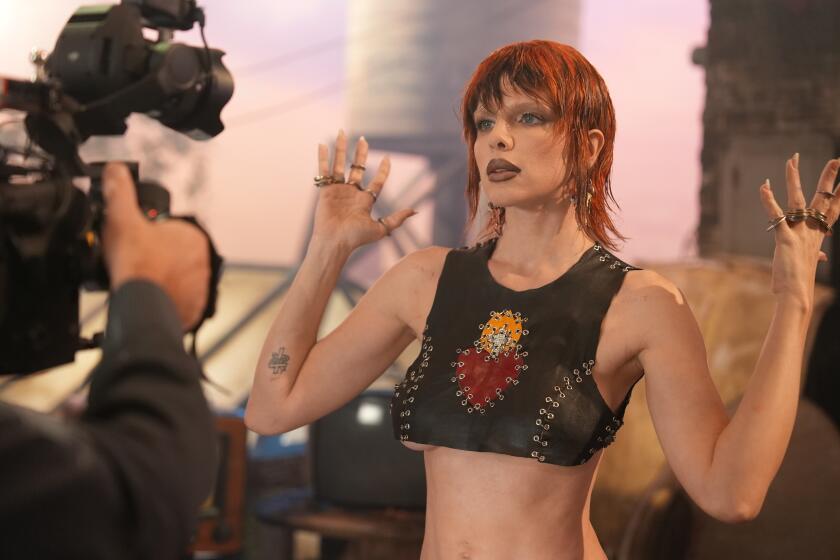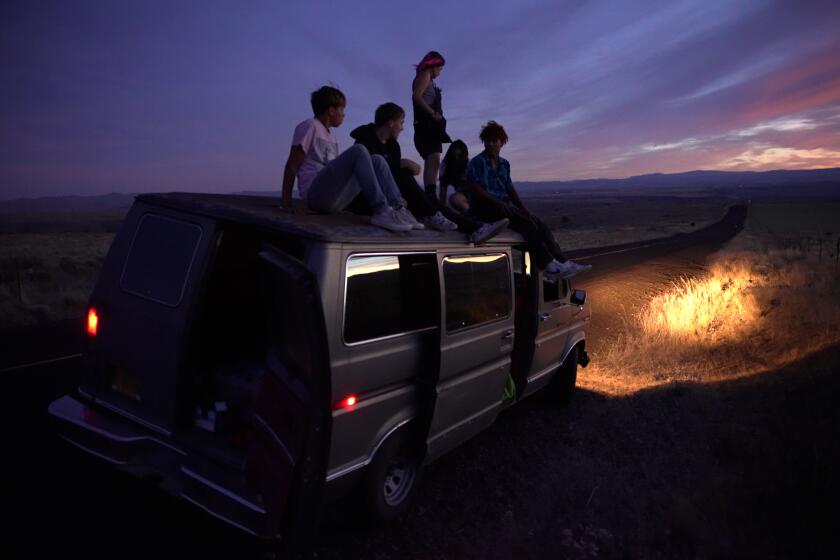L.A. Metro has problems besides crime and ridership: It’s in the design
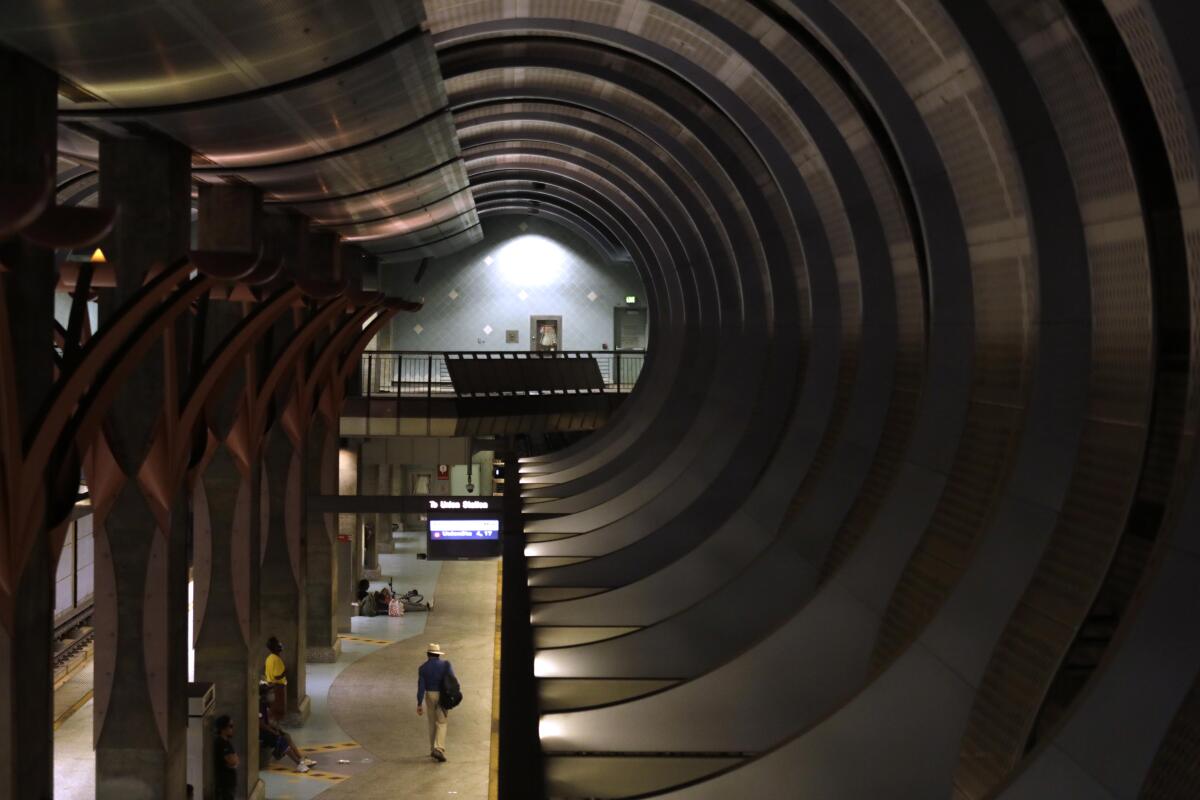
Is Nextdoor an absolute scourge? This story indicates that the answer is yes. I’m Carolina A. Miranda, art and design columnist for the Los Angeles Times, with all the week’s essential art news — and old-timey Mexican restaurants.
Metro’s design issues
It has not been a good season for L.A. Metro. Crime is up on buses and trains. The agency has been thrust into the role of social services agent as it struggles to contend with the homelessness crisis, which sends many of the unhoused into the relative shelter of train stations and Metro-owned lots. A staggering heat wave recently put the spotlight on the fact that only a quarter of the city’s bus stops are equipped with shelters.
A glorious public transit system L.A. Metro is not. (Oh, to be riding the metro in Seoul, where a monitor in the station not only tells you how soon your train will arrive but also exactly where in the system it is. And then, once you board, you’re treated to amazing videos of cartoon larvae taking the metro.)
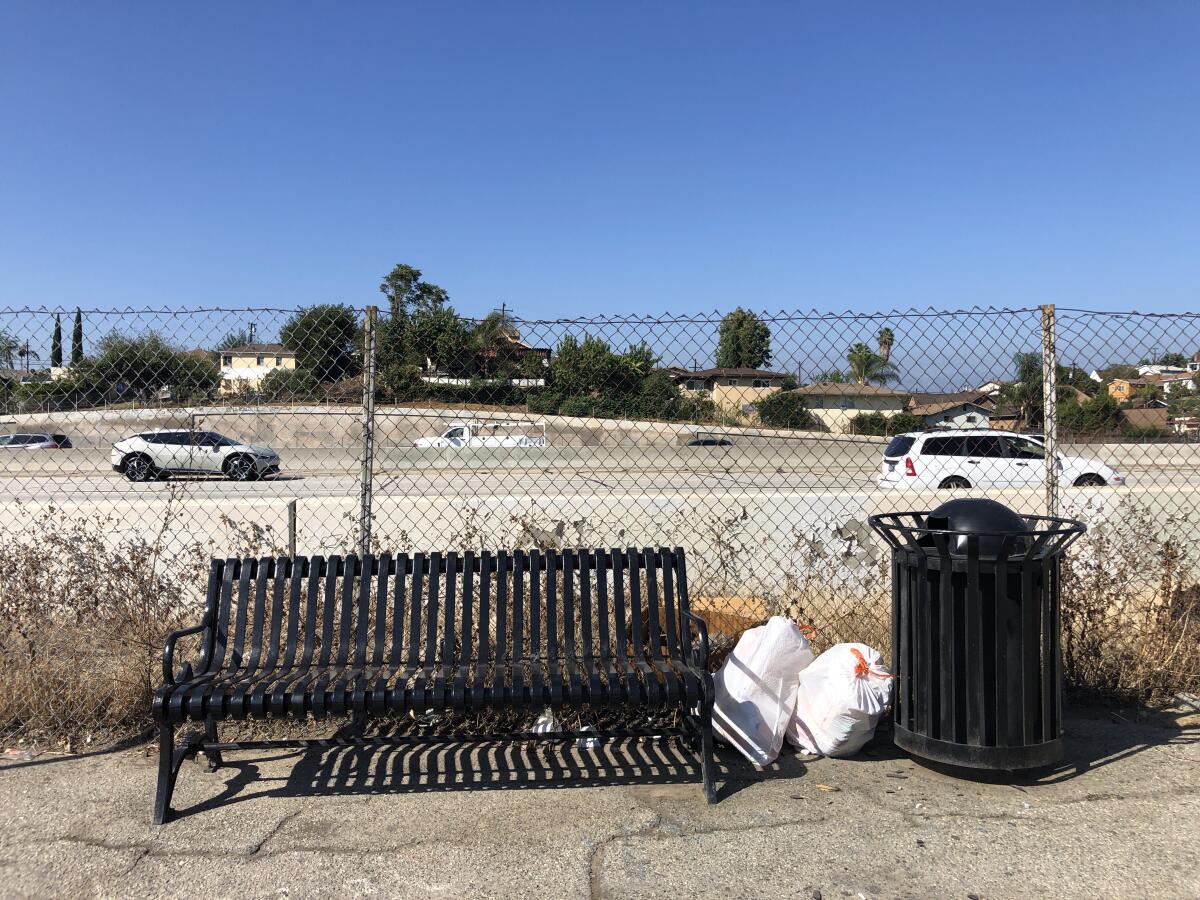
Certainly, some of these issues, like homelessness and the pandemic (which has affected ridership) are beyond Metro’s control. Other issues are of the government’s own making: For two decades, the city has worked with an outside contractor to build bus shelters that would generate revenue through advertising. It’s been an effort hampered by municipal red tape. (At one point, installing a bus shelter required 16 approvals from various city agencies, including the offices of individual council members.) It’s also a system driven by eyeballs rather than necessity. Advertisers don’t want to be in dead zones, so shelters tend to be installed in locations that will deliver return on investment, rather than in areas where riders are being broiled by the sun.
Beyond policy, there are design issues at the root of some of these problems. The first is related to safety and Metro stations that can feel lonely and untended. The second is all about bus shelters — and in that case, there is a solution, and it’s right under our noses (or, more accurately, right next door).
Make the most of L.A.
Get our guide to events and happenings in the SoCal arts scene. In your inbox once a week.
You may occasionally receive promotional content from the Los Angeles Times.
Safety first. In July, my colleague Rachel Uranga reported on a $122-million pilot program that would put uniformed workers on trains and buses to help riders feel safe. In the case of the literal metro — as in the train — safety and, more importantly, perceptions of safety, have everything to do with stations that feel isolated from the city in purpose and design.
In most major cities, metro systems and the tunnels leading to them are stocked with commerce, which brings human vitality to what would otherwise be grim transit areas. In New York, subway stations come with snack and magazine stands. For years, the Times Square station was home to Record Mart, an epic music shop that specialized in Latin music (unfortunately, it was a casualty of the pandemic). In Mexico City, you’ll find shops plying herbal remedies and school supplies. Seoul and Tokyo have made a high art out of creating vast underground mini-malls in and around stations that offer everything from cute socks to grilled squid.

In L.A., the bulk of our stations are divorced from daily life in this way. There is no place to buy even so much as a bottle of water in most stations. And automated TAP card machines make it possible to navigate a station without ever encountering a Metro employee. All of this can make for an unsettling place to be if you’re riding by yourself, especially late at night.
This is by design. A spokesperson for L.A. Metro tells me that stations “typically do not include retail spaces unless directed by the Board or requested by stakeholders.” And any food service providers would not be “consistent with Metro’s ‘no food or beverage’ restrictions within station paid areas.”
It’s high time to rethink this. I understand the rationale, from a maintenance perspective, for not wanting people to eat and drink. But the lack of a consistent human presence in stations is simply creating other safety and maintenance problems. Small commercial spaces could enliven what can be some very lonely Metro stations, thereby making them safer. They could also provide us with places in which to conveniently take care of quotidian errands: Imagine a Metro station where you could drop off your dry cleaning and your shoes for repair before hopping a train to work.

This brings me to design issue No. 2: bus shelters.
The lack of shelters is critical. Bus riders account for the lion’s share of the public transit riders in Los Angeles County, according to the American Public Transportation Assn. (On an average weekday, there are about 561,000 bus trips around Los Angeles County, compared with almost 98,000 on light rail.) The lack of shelters — especially as the climate grows warmer — has shown bus riders nothing but contempt.
In a report published this week, Uranga wrote about how the city was “poised to approve a contract that would add thousands of its own shade structures.”
Before approving that contract, the city may want to have a look at what its neighbor is doing. Because a great system for sheltering bus stops already exists — in Santa Monica. It was designed by the L.A.-based firm LOHA, founded by Lorcan O’Herlihy, and consists of a modular kit of parts that can be sized to available space.
LOHA’s design for Santa Monica’s Big Blue Bus consists of a circular canopy that sits atop a single pole. For a tight space, a single canopy can be installed. At busier intersections with a broad sidewalk area, you can stagger a series of canopies to create a bigger shaded area. Seating can also be added as needed. Because the canopies are anchored by a single pole, they are easy to install without compromising underground utilities.
O’Herlihy tells me he receives regular calls about the system from other cities, including municipalities in Europe. He says repurposing the design is eminently doable. “It’s an idea that could be built upon,” he says. “You could make it oval or square.... You could do it specific to the orientation of the sun. You could cant it. You could paint it a different color.”
Metro L.A. needs to pick up the phone. The solution exists. It’s sitting, in plain sight, right next door.
In the galleries
At MOCA Geffen, Iranian-born, U.S.-educated L.A.-based painter Tala Madani has a midcareer survey that just went on view, and Times art critic Christopher Knight describes it as “sprawling, alternately hilarious and eye-popping.” Organized by Rebecca Lowery, Ali Subotnick and Paula Kroll, the show, writes Knight, reveals an artist whose work could be the “truant love child of scatological transgressions by the late Mike Kelley and the feminist media smarts of artist Barbara Kruger.”
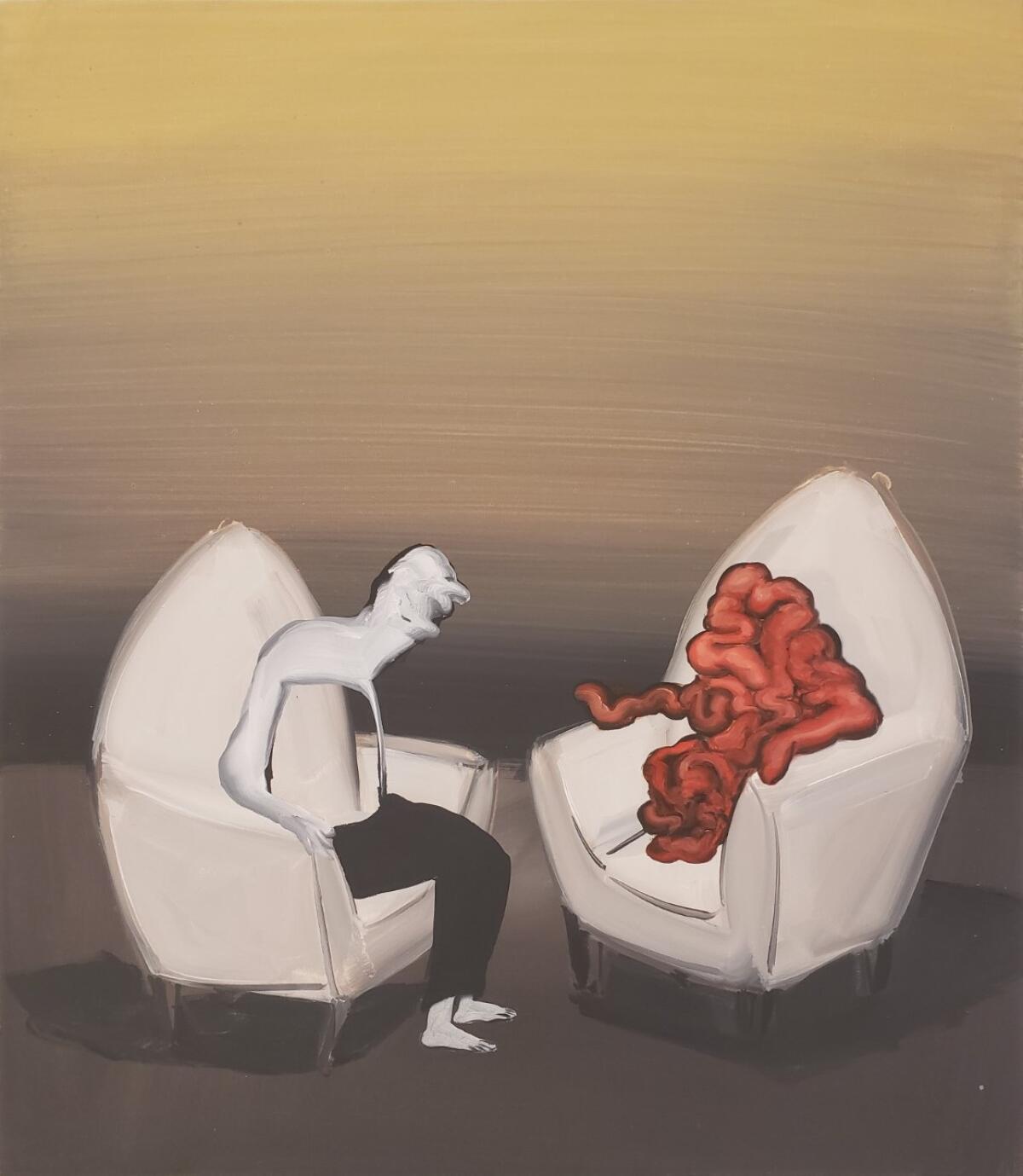
Classical notes
For four years, Lang Lang has been commissioning new arrangements of the Disney songbook for a new album inspired by Disney tunes. The pianist tells contributor Tim Greiving that the songs were inspiring to him as a child and that they had reemerged as important in the wake of the birth of his first son. “Walt Disney himself gave very clear ideas on what kind of style Disney music should have,” he says of their stickiness, “which is kind of a warm melody, with themes people can remember — people will sing along very well — and which has a great kind of harmonic, classic bass.”
Enjoying this newsletter? Consider subscribing to the Los Angeles Times
Your support helps us deliver the news that matters most. Become a subscriber.
Dance space
In a May episode of Netflix’s fantastical animated sci-fi series, “Love, Death and Robots,” a siren figure known as the Golden Woman becomes intrigued by a deaf knight named Jibaro. The episode is remarkable for a number of reasons — it recently won an Emmy for short-form animated program — but is most noteworthy for the way in which it employs dance as narrative device. Times culture writer Steven Vargas spoke with L.A. choreographer Sara Silkin about how the episode came together.
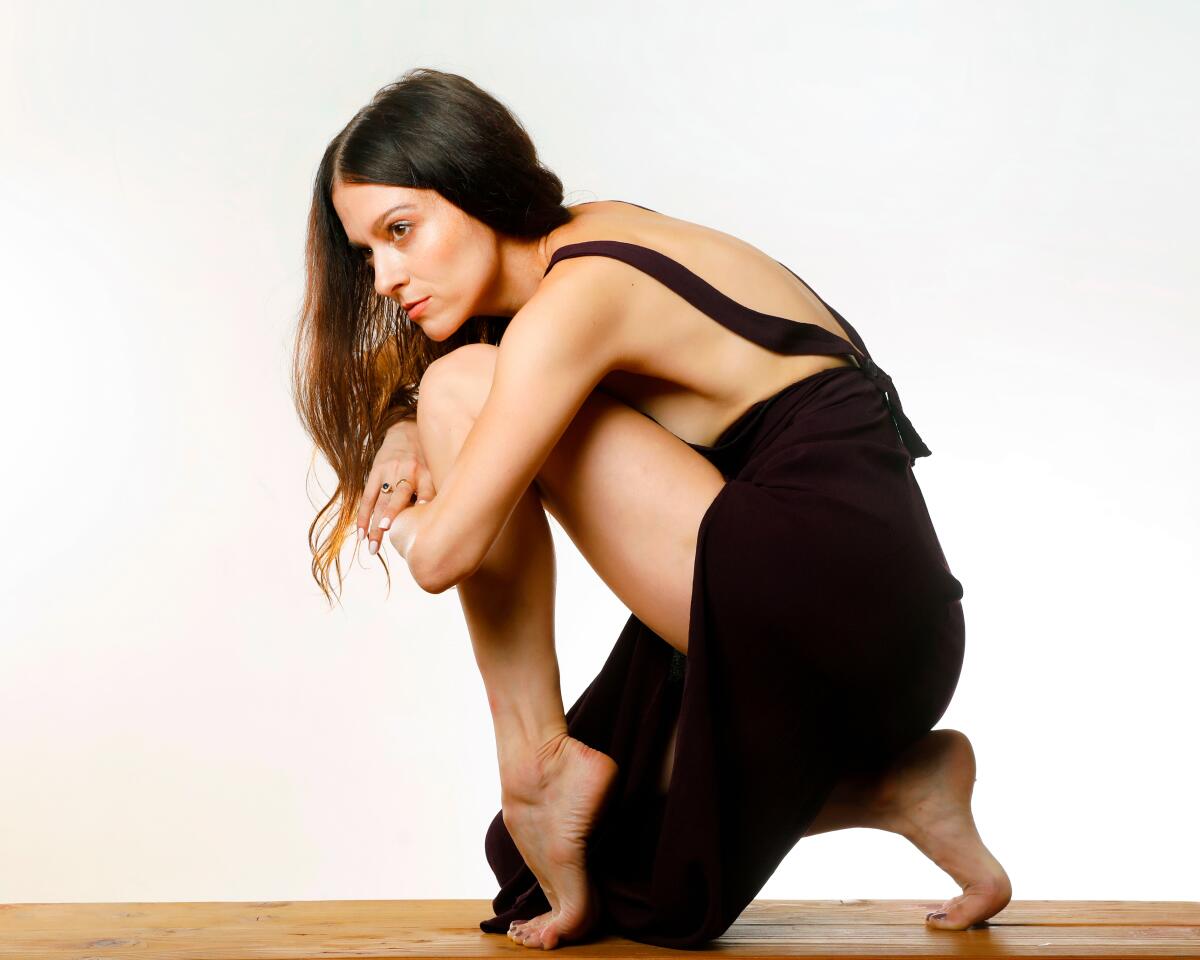
Addendum: Last week’s newsletter incorrectly identified dancer Sugar Vendil. We regret the error!
On and off the stage
Matt Shakman, split between theatrical and cinematic duties, is stepping down as artistic director of the Geffen Playhouse. Times theater critic Charles McNulty mulls over what it means for the Geffen to lean on Hollywood talent for leadership. “If anyone could figure out how to synergize the creativity of a city dominated by film and television yet overflowing with theatrical ingenuity, I was certain that it would be Shakman,” he writes. “But the demands of theater aren’t easily contained, and an artistic director needs to be on hand, minding the unruly store.”
Deaf West has reimagined Ian Johnston’s “Oedipus the King” as “Oedipus,” a theatrical production that fluidly blends gesture and spoken word. Now on view in the outdoor theater at the Getty Villa — the perfect venue during a brutal heat wave — the show was directed by Jenny Koons. “Gesture and movement express the passion and fury beneath the play’s words,” writes McNulty of the production. “Andrew Morrill and Alexandria Wailes adapted the play into American Sign Language, but it’s the art of the actors that augments the effect of universal physical communication.”

Henrik Ibsen’s “Ghosts” has landed at the Odyssey Theater, in a production directed by Bart DeLorenzo. The set by Frederica Nascimento brings a “refreshing modernity” to the play, writes McNulty. But the production compresses all of the action into one 90-minute production. “The pace is as relentless as it is merciless,” reports McNulty, “without the expository padding to protect characters from a direct assault of their history.”
Ashley Lee reports on how the touring version of the musical “Jagged Little Pill” has evolved since its early staging on Broadway — which drew controversy for the ways it eliminated facets of a central character’s gender identity. The new version brings greater depth to the character of Jo, along with other narratives. “We decided that if we consciously choose to have a show that’s about a lot of issues and is super well-intentioned,” says the book’s writer Diablo Cody, “then we’re just gonna have to be committed to keeping it as an accurate reflection of the lived experiences of the people whose stories that we’re trying to tell.”
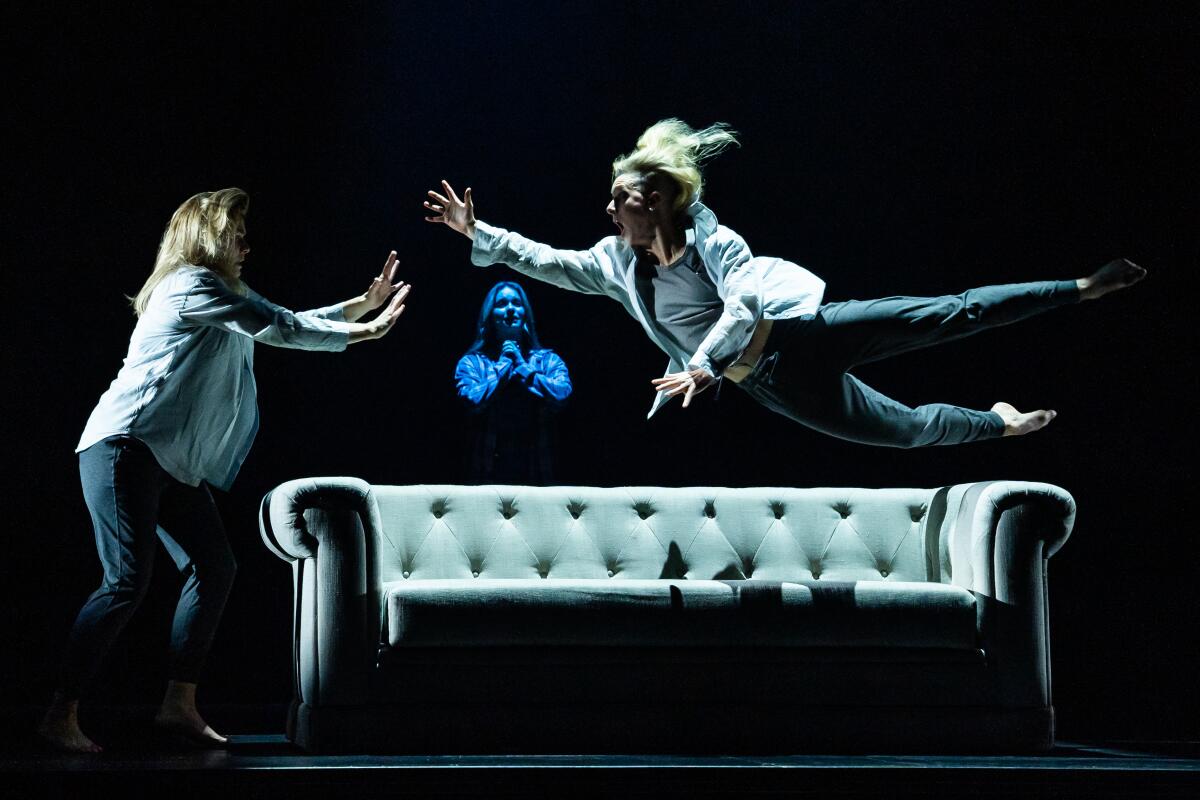
Somehow I missed “Mexican Pizza: The Musical” on TikTok, but thankfully Jessica Gelt had the preview on this cheesy mess (which, I will confess, sent me down a TikTok Taco Bell wormhole). The story involves Doja Cat, Dolly Parton, Mexican pizza rehearsal memes and some brilliant writing from Gelt: “Our love is messy like that. Messy like beans, meat, sauce and cheese on a crispy shell.”
I’ll take two, with extra hot sauce, to go with this (terrible) musical, which now lives on YouTube. Though the part inspired by the witches from “Macbeth” really moved me.

Design time
The headquarters that Welton Becket designed for Texaco on Wilshire Boulevard in the 1950s has been reborn as an apartment complex called the Crosby — complete with fitness center, swimming pool and karaoke room. My colleague Roger Vincent reports on how this conversion is part of a national push to convert aging office buildings into residential infrastructure.

Around L.A.
This week marks the centenary of the birth of Yma Sumac, the Peruvian soprano known for her glam looks, ’50s-era exotica albums and four-octave range. The Times’ Sergio Burstein reports on tributes to the singer that materialized in L.A. this week — including a sculpture created by Martín Espinoza Grajeda intended for Sumac’s grave.
This represents a good opportunity to resurface that time I scoured L.A. for traces of Sumac, a figure who was “a rare representation of the Andean in U.S. popular culture (albeit one distorted by the funhouse mirror that is the entertainment industry).”
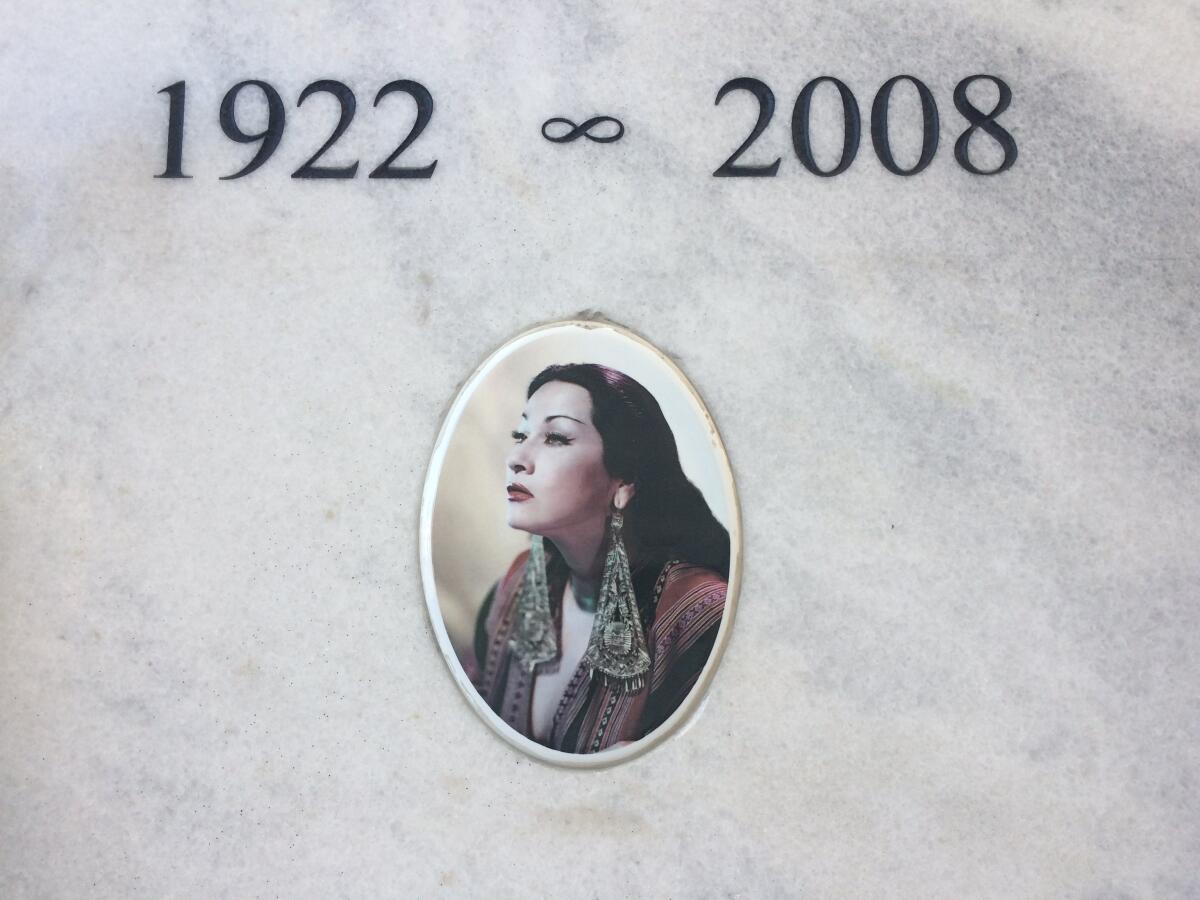
Moves
The ONE Archives Foundation has named Tony Valenzuela its new executive director. Valenzuela is a longtime activist and nonprofit leader in LGBTQ+ spaces. He succeeds Jennifer Gregg, the organization’s first-ever executive director.
Silvia Forni is taking over as director of the Fowler Museum at UCLA. She joins from the Royal Ontario Museum in Canada, replacing Marla Berns, who retired last year.
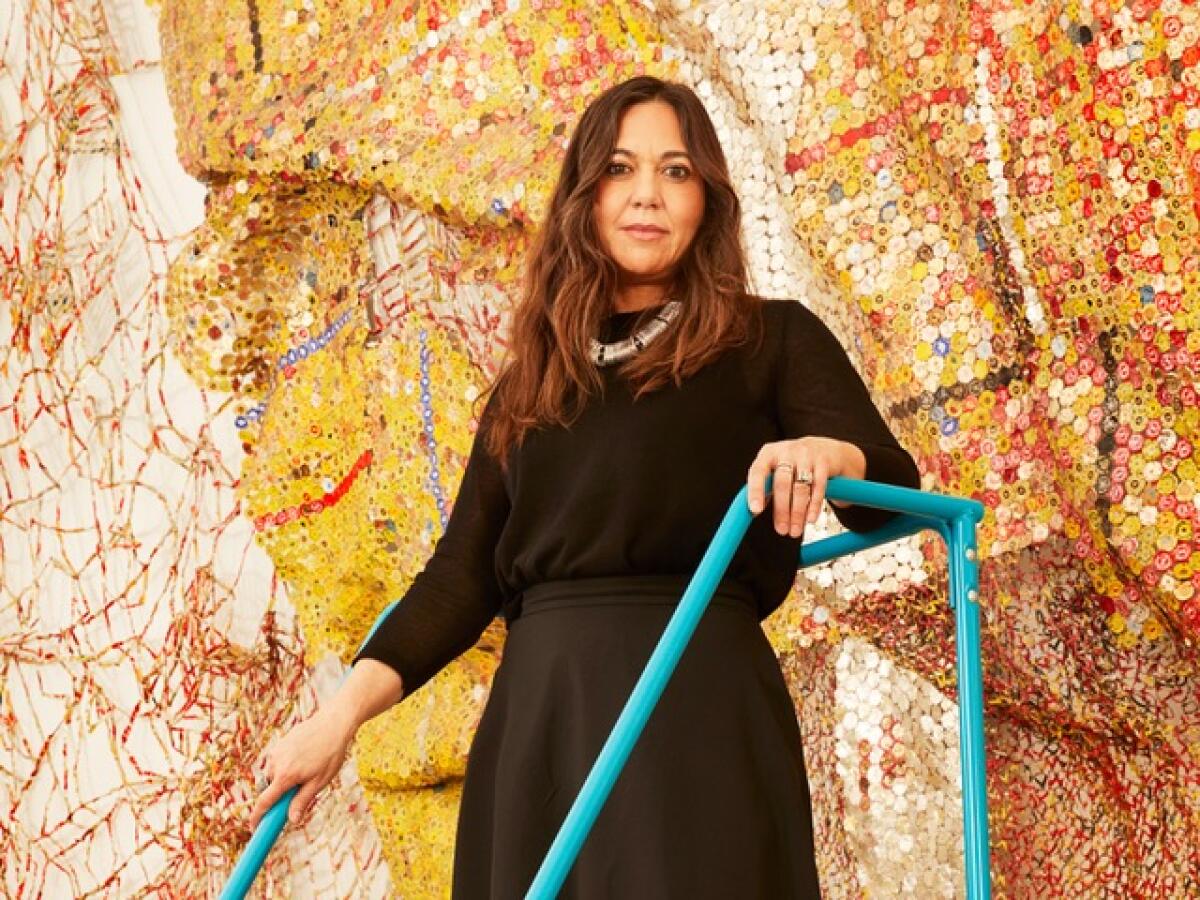
The Getty Foundation and the National Trust for Historic Preservation have announced a $3.1-million grant program to help preserve Modernist architecture by Black architects and designers.
Plus, the Getty Museum just picked up a set of 19th century sculptures by Charles-Henri-Joseph Cordier and more than 200 photos by Eugène Atget.
The Graham Foundation has announced its 2022 grants. Among the recipients are a project on the design of the visitor areas at Harpers Ferry at the Center for Land Use Interpretation in L.A., a show devoted to the work of architect and engineer Alejandro Zohn at the Schindler House in West Hollywood, an exploration of Mexican military architecture at LIGA in Mexico City and “New Angle: Voice,” a podcast that looks at the underreported stories of women in architecture. You can find the complete list right here.
Passages
Jean-Luc Godard, one of the most inventive of France’s Nouvelle Vague filmmakers, known for now-iconic pictures such as “Breathless” and “Contempt” and a body of work that continuously disrupted established cinematic narrative styles and filmmaking techniques, has died at 91.
Times movie critic Justin Chang describes movies that “broke right through the seamlessness and artifice, the illusion of coherence, that audiences had come to expect from movies. Godard’s movies knew they were movies and saw no point in pretending otherwise.”
“Godard didn’t make it easy, or not always,” writes the New York Times’ Manohla Dargis. “He insisted that we come to him, that we navigate the densities of his thought, decipher his epigrams and learn a new language: his.”
Dargis’ piece turned me onto this little nugget: a YouTube video that caught Godard on Google Street View.
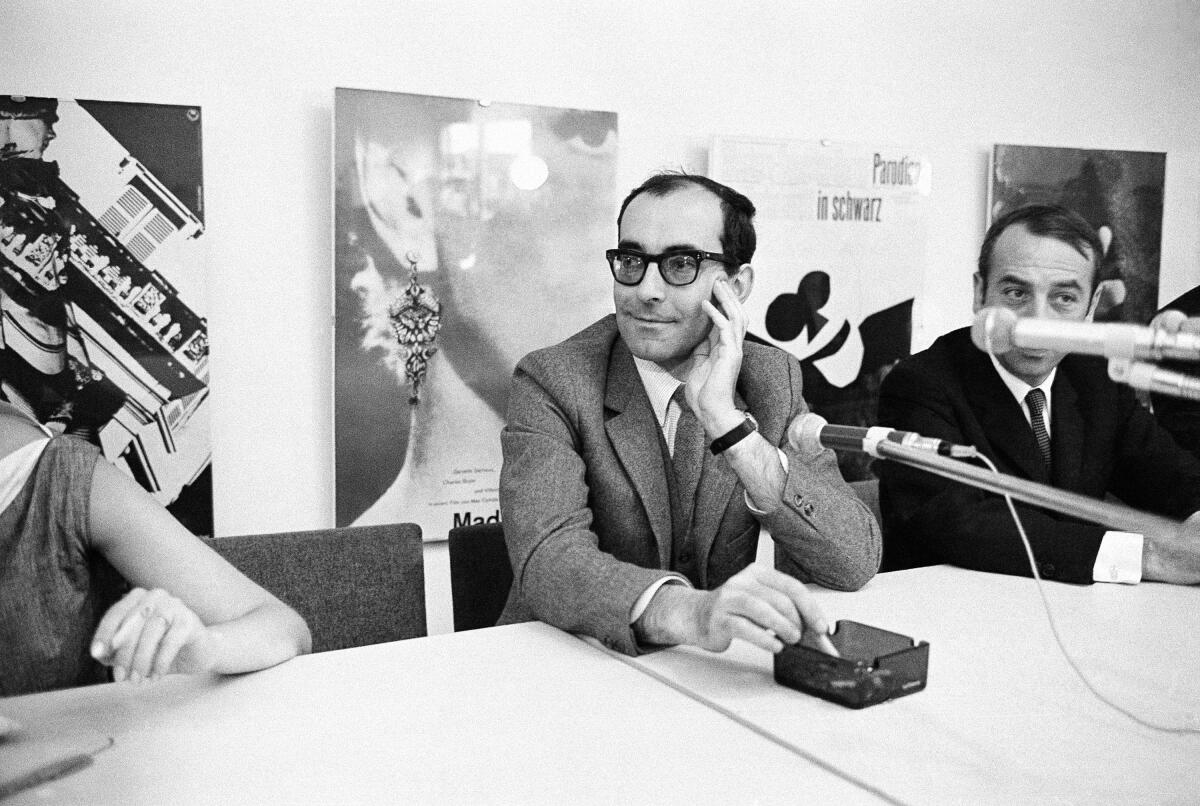
William Klein, a “strikingly original” artist who with his camera chronicled Black Panthers, Vogue fashionistas and the pulsing throb of city streets in still and moving images, has died at 96. “My aesthetic was the New York Daily News,” he once wrote of his early books, “a tabloid gone berserk, gross, grainy, over-inked, with a brutal layout, bull-horn headlines. This is what New York deserved and would get.”
Artist Newton Harrison, who with Helen Mayer Harrison (also his wife), helped spur a movement in ecological art, is dead at 89.
Rommy Hunt Revson, a singer, songwriter and voice teacher who invented the scrunchie, has died at the age of 78. In an appreciation, Ashley Fetters Maloy of the Washington Post considers the scrunchie’s legacy: “Its utility is unflagging, its widespread appeal less consistent.”
In other news
— “Phantom of the Opera,” which has been on Broadway for 35 years, will shut down.
— A building on the other Broadway, in downtown L.A., sports a mural by Banksy — and it is now for sale. Matt Stromberg digs in to the mural’s curious story.
— A wild TikTok about the strange and overwhelming design of Ricardo Bofill’s Les Espaces D’Abraxas on the outskirts of Paris.
— A Frank Lloyd Wright-designed house is on the market for the first time in Mount Pleasant, Wis., for the bargain price of $725,000.
— Is the Michael Sorkin of today making memes? Dwell reports on the architecture memesters bringing some irreverence to the field.
— David Frum, who was a presidential speechwriter for George W. Bush and whose parents collected African art, weighs in on returning the Benin Bronzes to Nigeria.
— The Washington Post has a primer on the artists who painted Barack and Michelle Obama’s White House portraits: Robert McCurdy and Sharon Sprung.
— I’m adding John Lurie’s memoirs to my reading pile. Cintra Wilson reviews “The History of Bones” in the New York Review of Books.
— Another good NYRB read: Eleanor Clark on John James Audubon’s diaries.
And last but not least ...
Will I eat at all 38 of the 38 classic Mexican restaurants compiled by my colleagues in the Food section? Yes. Yes, I will.
The biggest entertainment stories
Get our big stories about Hollywood, film, television, music, arts, culture and more right in your inbox as soon as they publish.
You may occasionally receive promotional content from the Los Angeles Times.


